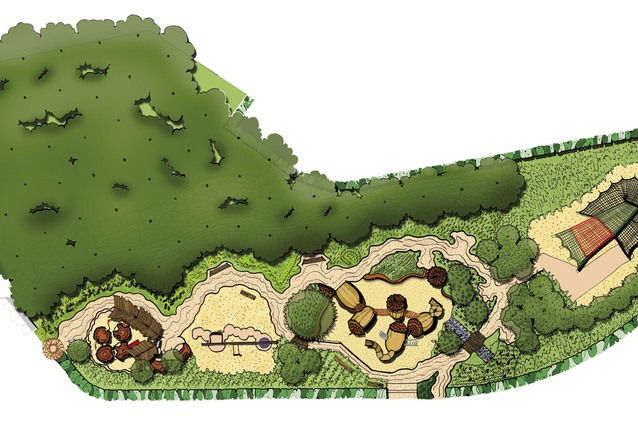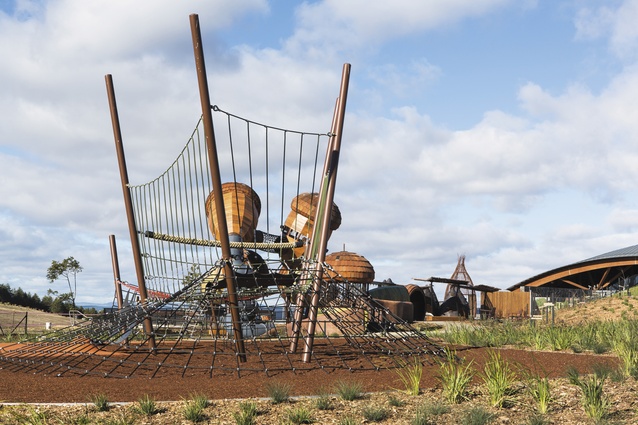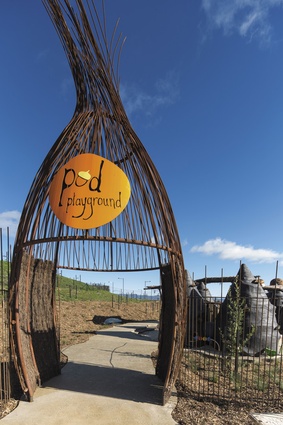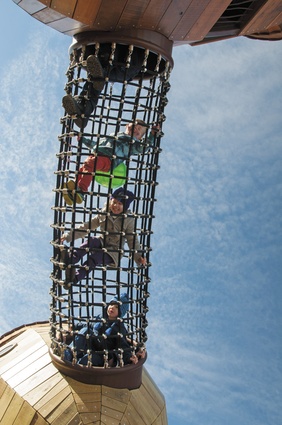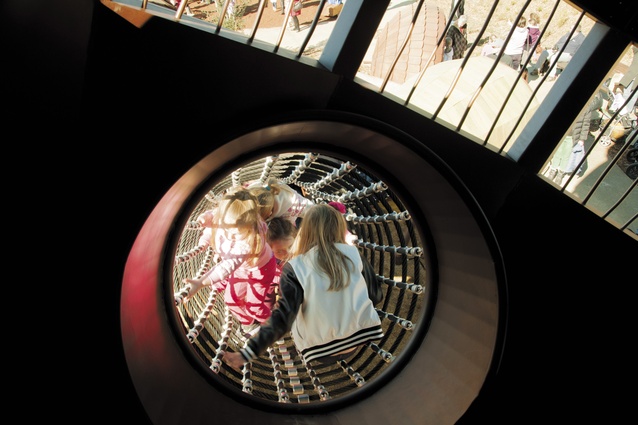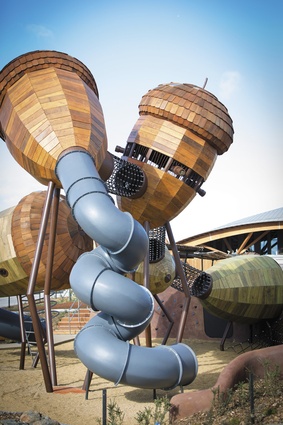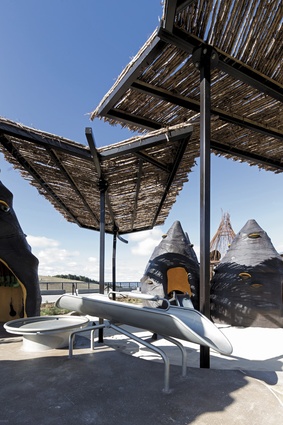Arboreal influence
One hundred forests, 100 gardens: could there be a better backdrop for a playground? I can barely imagine one. This Pod Playground, designed by Australian landscape architecture firm Taylor Cullity Lethlean (TCL) sits in exactly such environs at the National Arboretum Canberra, which was also designed by TCL (in association with architects from Tonkin Zulaika Greer). Following bushfires in 2001 and 2003, which razed much of the Pinus radiata forest, Himalayan cedar, and remnant areas of Eucalyptus that stood on the 250Ha site, a competition was undertaken by the Government of the Australian Capital Territory to design the National Arboretum, which was an entity originally considered by the godfather of Canberra’s planning, the American architect and landscape architect, Walter Burley Griffin.
As mentioned, the competition-winning proposal by TCL and TZG was based on a concept of 100 forests and 100 gardens. The collection, explains TCL’s Simone Bliss, focuses on threatened, rare, and symbolic trees from around the world that are adaptable to Canberra’s climate. From an organisational perspective, each ‘forest’ will occupy a 40m x 40m allotment. The planting of the arboretum started 3-4 years ago, so it will take some time for the trees to reach substantial sizes. To fill the void, so to speak, in the meantime, a series of works have been completed that provide the arboretum with a visible heart.
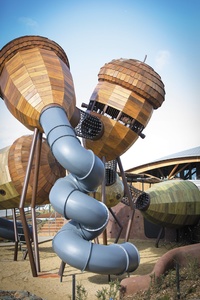
On site, says Bliss, the playground and visitor centre set up a central hub that will be an “instant activation” while the forests are growing. Along with the waterwise garden, pavilion and amphitheater, these amenities are located in close proximity so visitors can stay within that central zone and experience the different elements.
Given the surrounds and, to paraphrase one of Burley Griffin’s more famous quotes, the playground works are a logical outgrowth of the environment in which they are located. In other words, thematic inspiration for the play space – a meandering, organic place with few straight lines, wasn’t too far away. The arboretum includes a forest of cork oaks (Quercus suber), which were planted between 1917 and 1920. Many of the trees were grown from acorns provided by Burley Griffin. (The cork forest is listed on the Register of the National Estate and the ACT Sites of Significance Register.)
As an attention-grabbing feature, you can’t go too far past giant acorn cubby houses. At the arboretum, there is a cluster of five; one, sans cap, forms an entrance way; the others, which sit on spider-like metal legs, are linked by web-like tunnels up to five metres high. The interiors are fitted with all manner of play-enlivening devices, kaleidoscopes, for instance, insects and spiders set in resin, and musical objects in many forms, including thunder sound panels, rain and hail tubes and wind chimes.
Bliss says that as a starting point they took the cork oak forest’s acorns and “imagined that they’d been catapulted up onto the hill and grown in scale.” These upsized acorns are constructed of Pinus macrocarpus batons and western red cedar shingles, with the designers going so far as to concern themselves with a representation of ripeness: those acorns close to the ground have a greener appearance than those higher up. Time, eventually will silver the freshness off the timber.
Banksia seed pods are another visual feature of the playground. They are made from glass-reinforced concrete, and come complete with fibreglass seed lips that go some way towards proving that it is indeed true that truth is stranger than fiction. Says Bliss, “We wanted to represent something that is native to Australia. They are pretty quirky in themselves. They were pretty easy to tap into as an area for the toddlers.”
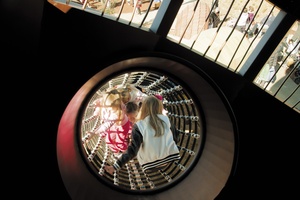
The Banksia pods are positioned near the entrance way ‘arbor’, a basket-like form that is an agglomeration of construction metal. This highly visible point will soon be, once it grows, complemented by the tangled masses of Muehlenbeckia planted as a backdrop to the site.
Bliss says that the arbor was originally planned as another type of seed, “but we thought it needed to be more permeable, and sit on its own, so we came up this idea of using rebar, and we worked with some artist-fabricators called Big Fish, who made the arbor, the banksias, and the shade structures. We had quite a few design sessions relating to the arbor, and what it could look like, constructing little models; we wanted it to be creature-like and then eventually, the Muehlenbeckia around the base will grow up and be like a mop of hair.”
Bliss says that it is “more difficult to do bespoke but also more rewarding”, and almost all of this playground has been custom designed. A playground auditor on the project team helped expedite the process. In the end, kids, like adults, vote with their feet – one suspects that getting kids out of this already well-subscribed space might be the hardest task facing those that visit.



